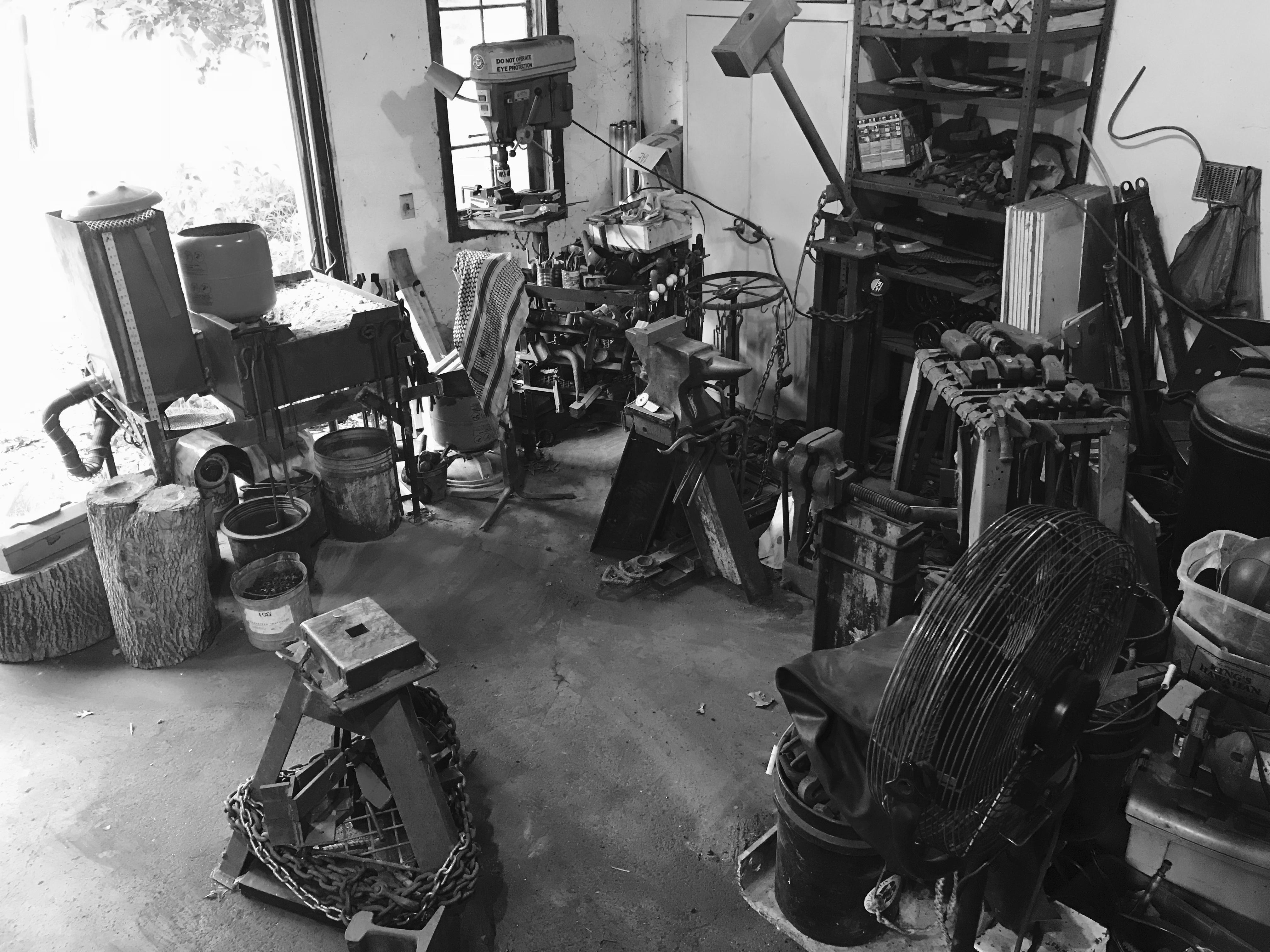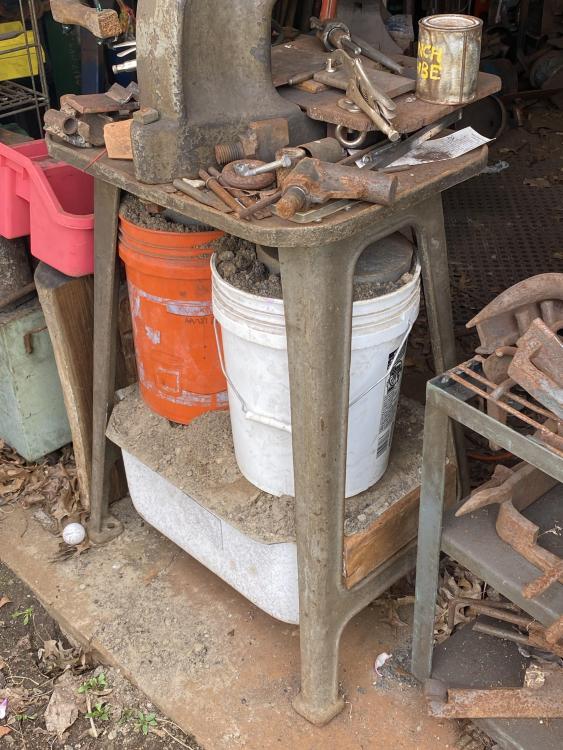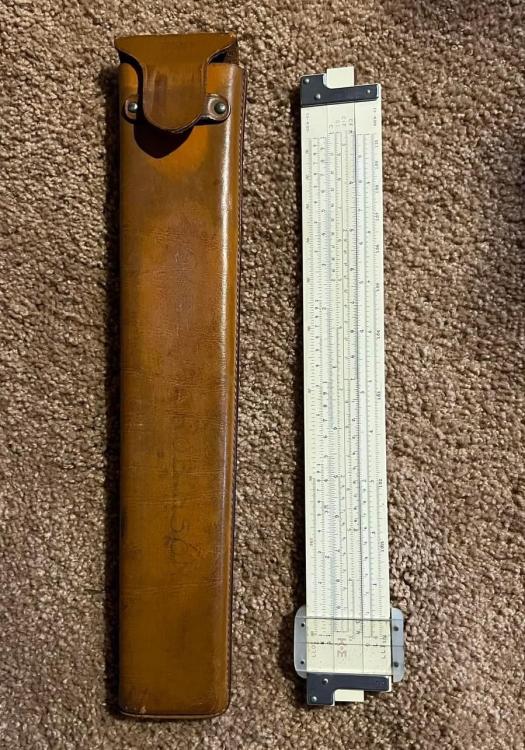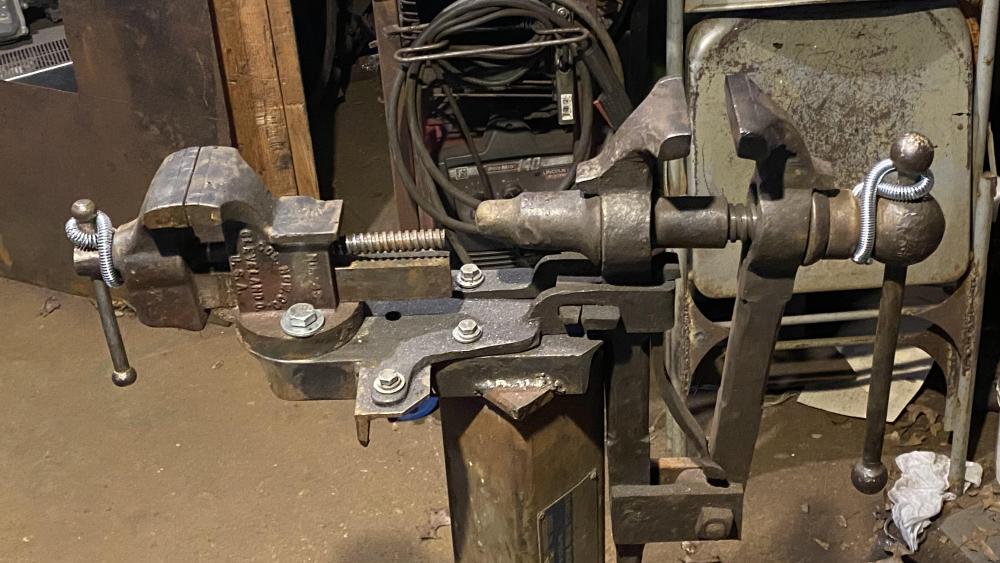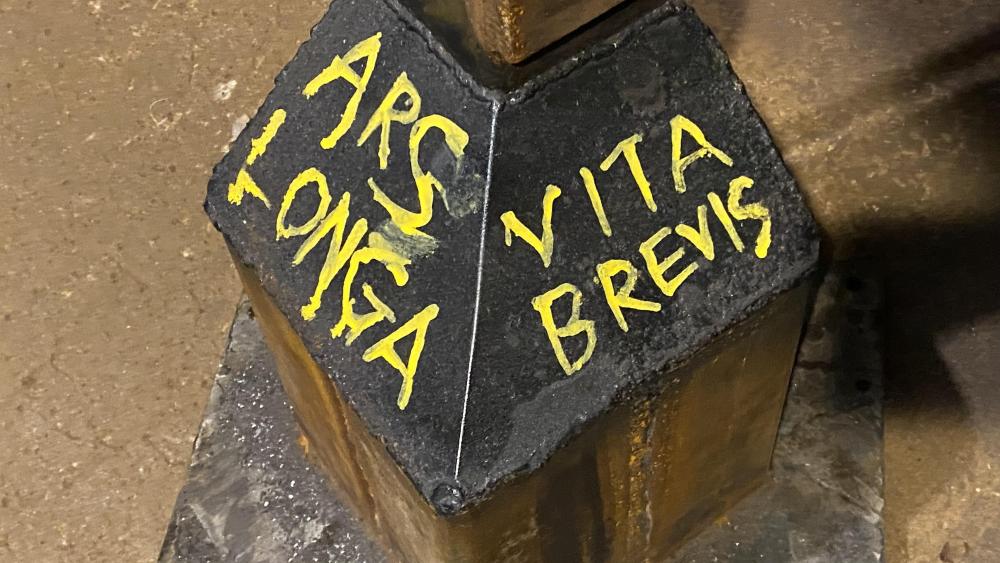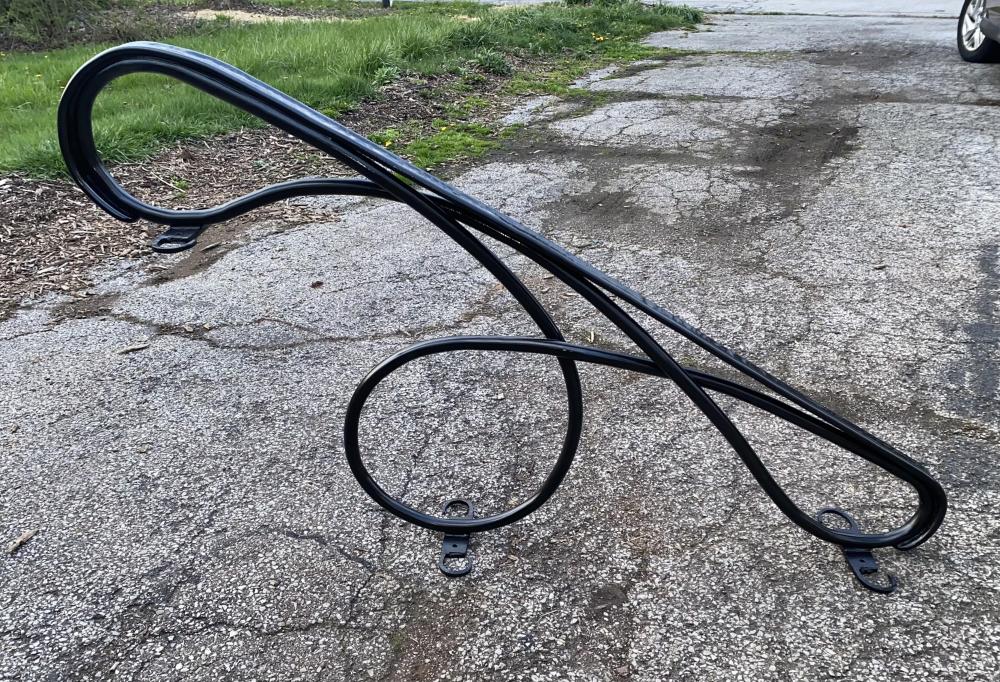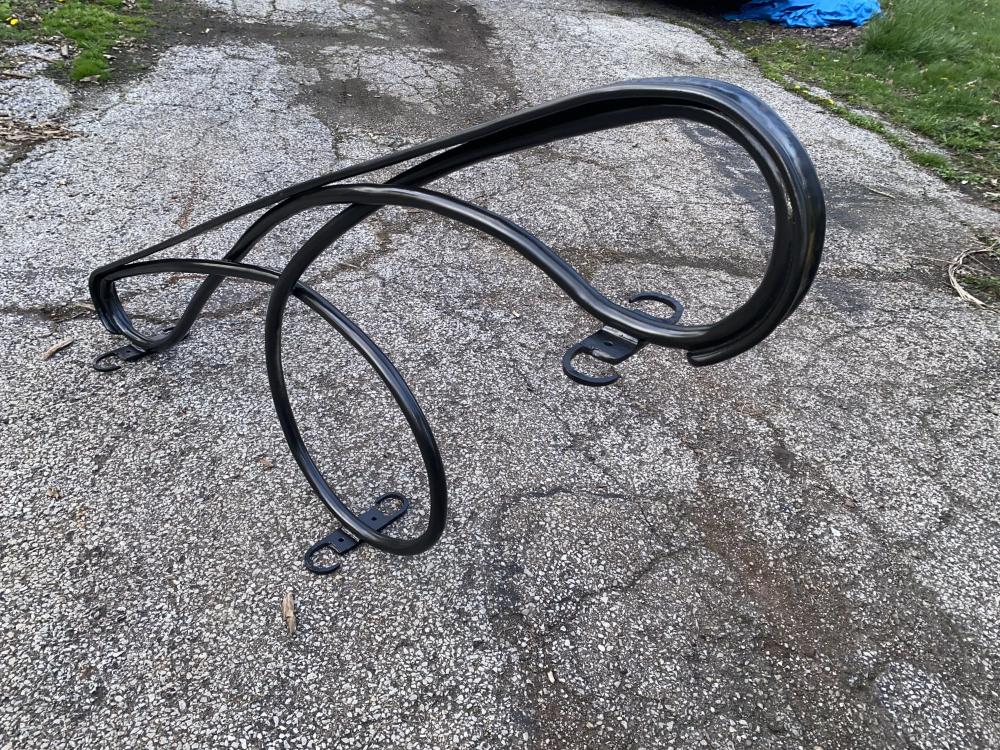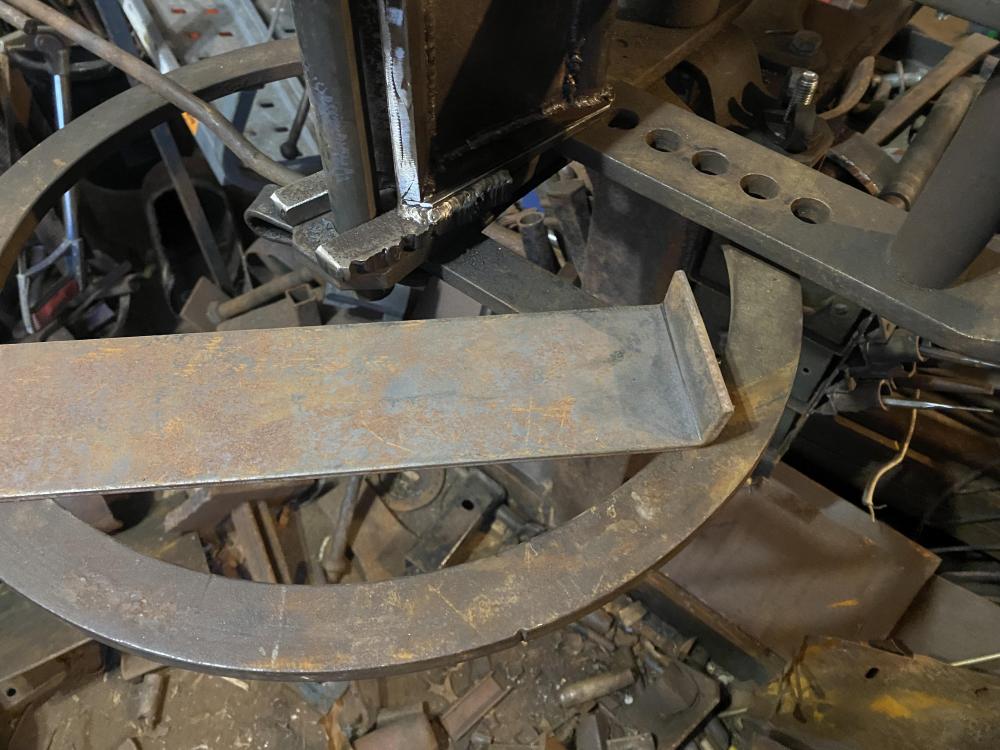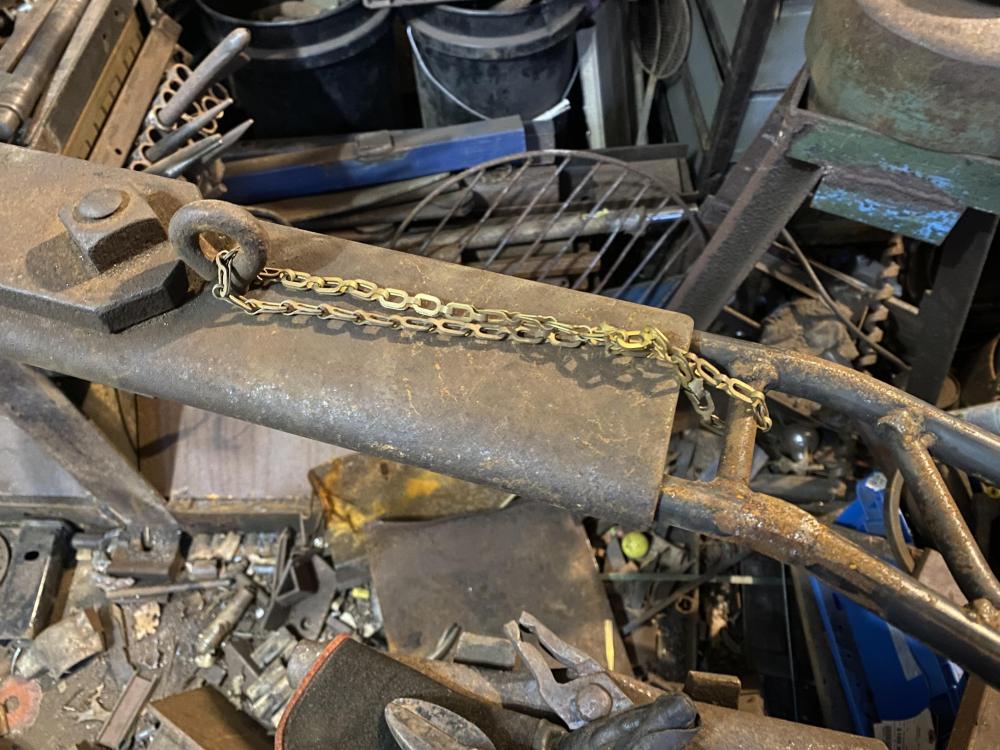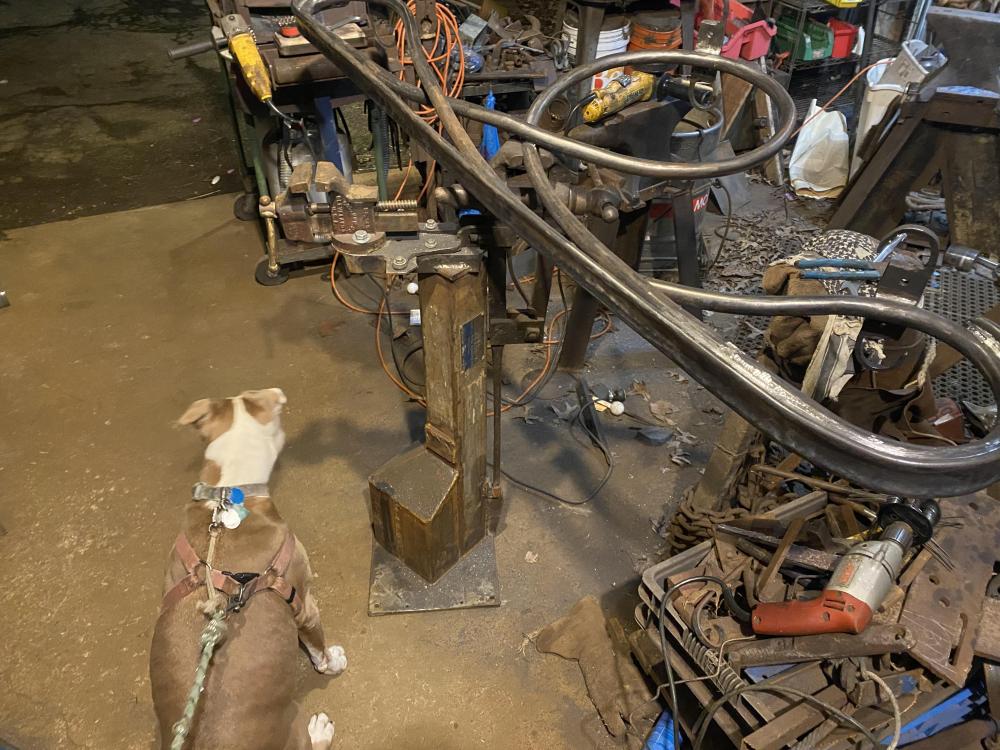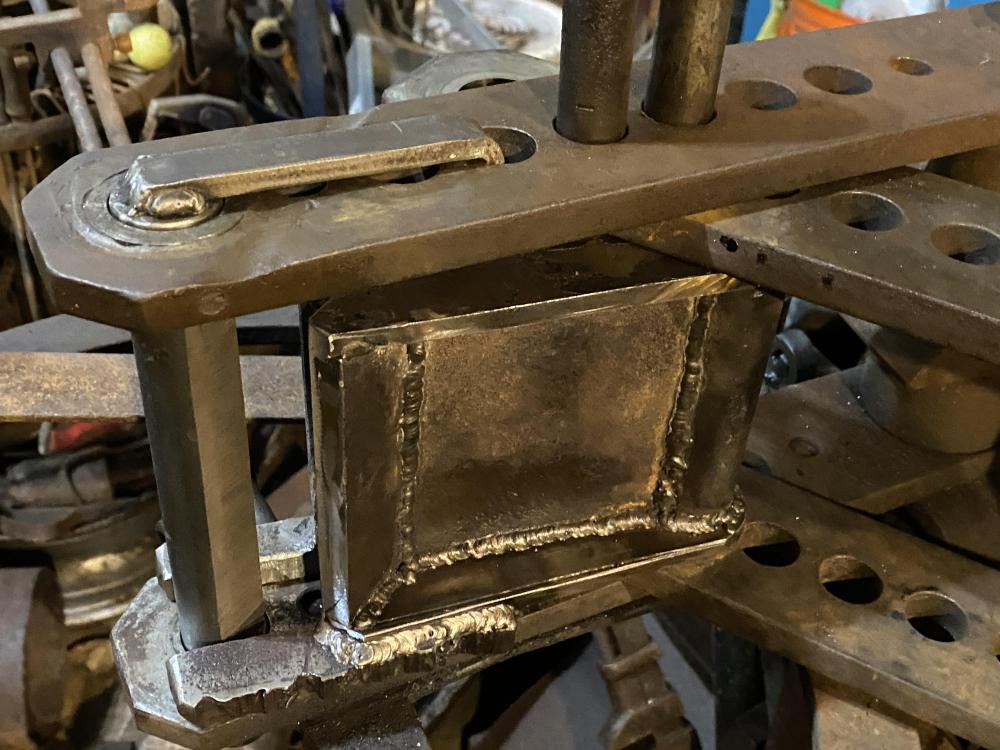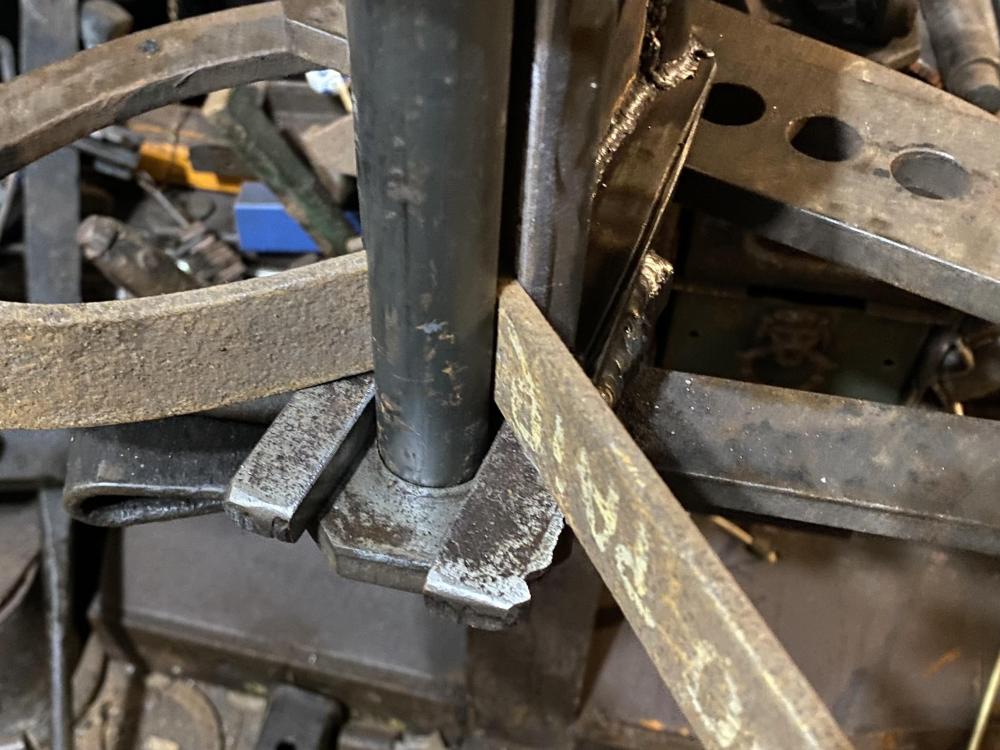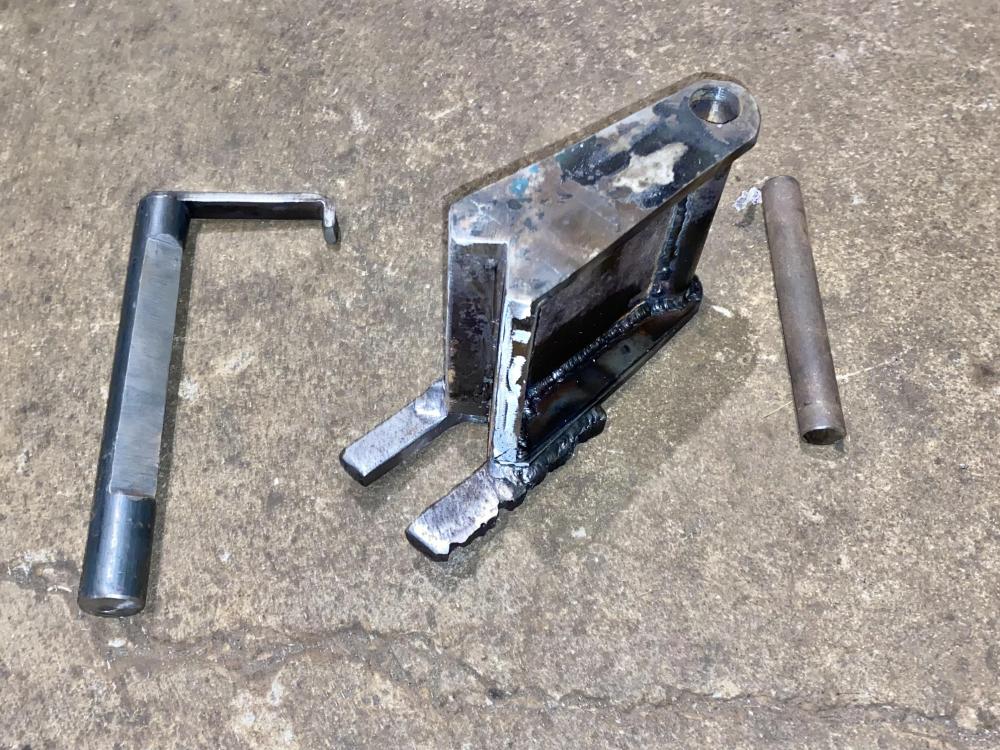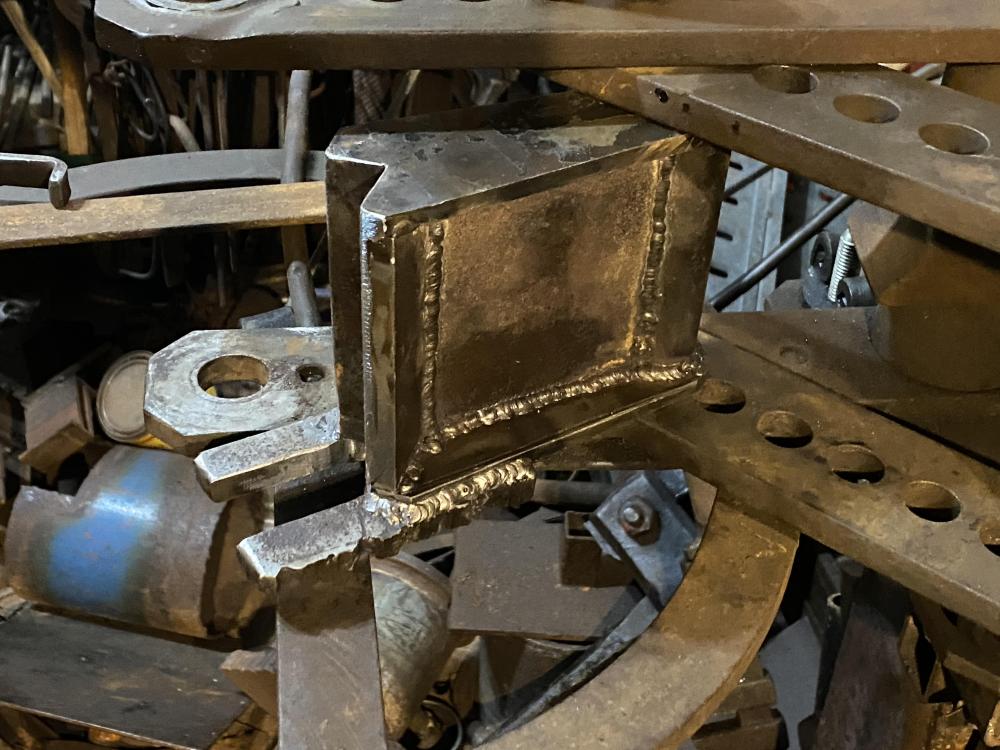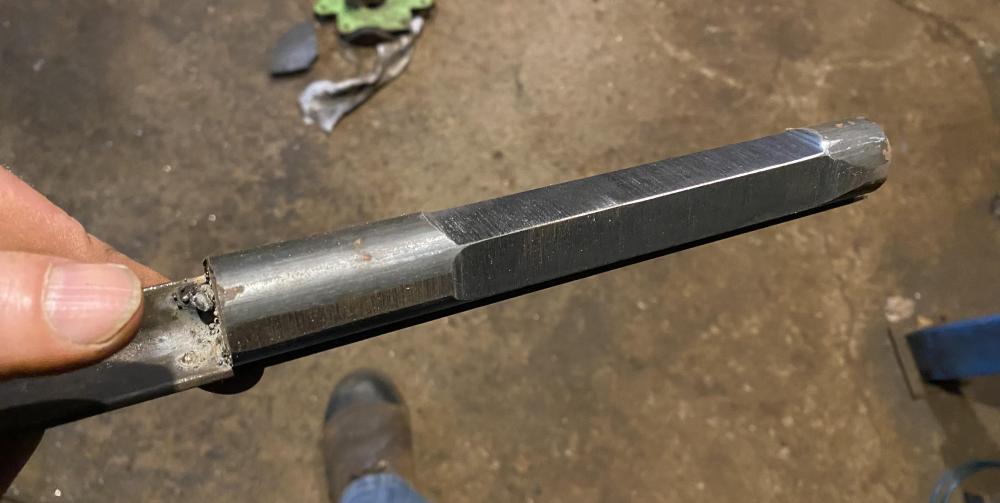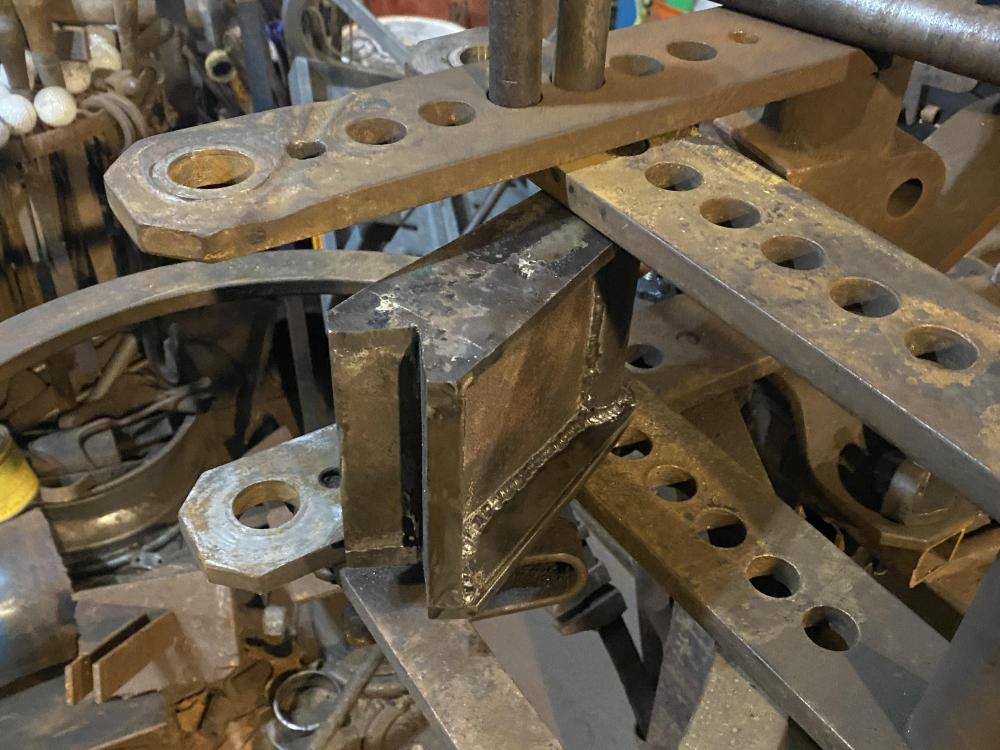-
Posts
19,270 -
Joined
-
Last visited
Content Type
Profiles
Forums
Articles
Gallery
Downloads
Events
Everything posted by JHCC
-

What did you do in the shop today?
JHCC replied to Mark Ling's topic in Blacksmithing, General Discussion
When your press is a little light and you can’t bolt it to the floor, but you DO have an old sink, two buckets, a couple of barbell plates, and a wheelbarrow full of sand… -
A neighbor was giving away a bunch of stuff, and I nabbed an old slide rule. Always wanted to give one a try.
-

What did you do in the shop today?
JHCC replied to Mark Ling's topic in Blacksmithing, General Discussion
-

What did you do in the shop today?
JHCC replied to Mark Ling's topic in Blacksmithing, General Discussion
-

What did you do in the shop today?
JHCC replied to Mark Ling's topic in Blacksmithing, General Discussion
The thought was adding a harder skin to the outside might affect its resistance to compression on side and tension on the other (kind of like a lally column). Alternately, I can always root around in the pile of shafts and axles to see if there’s anything there that’s the right size. -

What did you do in the shop today?
JHCC replied to Mark Ling's topic in Blacksmithing, General Discussion
Last night, I tried to bend a piece of 3/16” x 3” scrap, which took the handle extension and pretty much all my strength. While it did bend most of the way to 90°, the 60B1 pin started to bend a little. I straightened it out on the anvil with a few blows from a hand sledge, but I think if I need to bend anything that big in future, I’ll probably do it hot. I think I’ll also go ahead with my plan to case-harden the pin, to give it a bit more rigidity. While I was in the shop, I also made a keeper chain to ensure that I won’t lose the handle extension pin: And did some more cleanup on the current railing project: The new vise stand is proving to be extremely useful for this kind of thing, although Lola seems unimpressed. -

What did you do in the shop today?
JHCC replied to Mark Ling's topic in Blacksmithing, General Discussion
So far, only 3/16” x 1” flat bar. I’ll be trying out some other stock later; Hossfeld says the capacity for theirs is up to 3/16” flat and 1/4” round. -

What did you do in the shop today?
JHCC replied to Mark Ling's topic in Blacksmithing, General Discussion
Many hasps are hinged; not all hinges are hasps. Also, lots of things incorporate hinges besides doors and gates. Treasure chests, automobile hoods, and some varieties of motor mount spring to mind, as does a certain Hossfeld #2 Universal Bender stand.... -
Agreed.
-

JHCC's consolidated Hossfeld Universal Bender #2 thread
JHCC replied to JHCC's topic in Cold Worked Iron and Steel
As noted in the "What did you do in the shop today?" thread, I made a bulldozer die and its pins: The 60B1 Center Pin (the one with the right-angled facets and the arm that keeps it from rotating) and the 60B2 Bulldozer Die are both made from mild steel from my scrap bin. The 53B Wrist Pin (not visible in the above photo; it's a straight pin that allows the die to pivot within the swing arm and is trapped in place by the arms of the outer frame) is made from a piece of mystery metal that I suspect is 4140*. None of these are heat-treated, although I'm toying with the idea of case-hardening the 60B1 to give it a little extra toughness. If I do, I'll probably do the same with the work faces of the 60B2 as well, to give them a little abrasion resistance. The Hossfeld manual says that the bulldozer die's maximum capacity is 3/16" flat. Here's a photo of a piece of 3/16" x 1" flat bar that I bent just with muscle power and without the handle extension. I haven't yet tried anything wider, but I'll keep you posted. I'm probably going to leave this semi-permanently set up in the bender, as I can imagine needing it fairly regularly for making mounting brackets or the like for various bits of shop furniture and equipment. I think this will be a good combination with the recently completed hinged mounting described above. * This is from the same piece from which I made my 19B4 U-pin with lug and the ring-end pin for my nonstandard roller block. -

What did you do in the shop today?
JHCC replied to Mark Ling's topic in Blacksmithing, General Discussion
Thanks, Das. It's very cool tool, like having a miniature press brake in the shop. -

What did you do in the shop today?
JHCC replied to Mark Ling's topic in Blacksmithing, General Discussion
Made a bulldozer die and its necessary pins for the Hossfeld bender. This can put 90° bends in flat stock up to 3/16” thick. To grind the square sides onto the larger pin, I spot-welded it into a piece of angle iron and used that as a sort of carriage on the belt grinder. -

Would you buy and anvil without a horn???
JHCC replied to SubterraneanFireForge's topic in Anvils, Swage Blocks, and Mandrels
I was being pithy rather than scientific. -

Would you buy and anvil without a horn???
JHCC replied to SubterraneanFireForge's topic in Anvils, Swage Blocks, and Mandrels
Efficiency is just effectiveness in a shorter time frame. Not if done properly. If you're moving your workpiece a lot in between blows, then yes, you will end up with a sort of lumpy sawtooth pattern that will require a lot of smoothing. However, if you make sure to connect each divot, then the surface will be a lot more even. It's a little hard to explain, but this video from Brian Brazeal gives a good example of what I mean: A more dramatic example is the kind of traditional Chinese anvil with a completely domed top: -
Quick update: the belt dulled before the splice blew out. Better than the other way around.
-
I gather the ones they use now basically use gravity to hold themselves in place.
-

What did you do in the shop today?
JHCC replied to Mark Ling's topic in Blacksmithing, General Discussion
There were a couple of solar prominences (basically a planet-sized NARB) that lit up parts of the corona. I haven't seen a single photo that does justice to the majesty of the corona. While the sky was certainly dark, it wasn't completely black (as George notes), and the corona stretched out across several times the diameter of the sun's disc. The latter being blocked by the moon was a hole of utter darkness in the middle of the sky. It was haunting and magnificent. Meanwhile, back in the shop, I did most of the fabrication of a bulldozer die for the Hossfeld. I still need to make and weld on the bottom guide and finish its matching pin, but then it’ll be ready to go. -
Well, they had to slice off the blubber first....
-
There is one HUGE problem with closing (not sealing!) both ends of the pipe: getting the blade out for quenching. Getting the cap off one end of the pipe and removing the blade for quenching when everything is red-hot is tricky and potentially unsafe. Quenching the entire pipe is obviously no good, as it would keep the blade from contacting the quenchant. The point of the muffle/baffle is to even out the heat first and reduce the decarb problem second. Set up your pipe with one end capped and the thermocouple inside, bring it to proper heat, add a little charcoal and the blade, bring it back up to heat again, hold at temperature for the recommended soak time, and quench the blade. That should be sufficient for your purposes; anything fancier than that, and you should be looking at a heat-treating oven.
-
I made a harpoon for my 11th grade English teacher after we studied Moby Dick. He used to carry it to keep order in study hall; it later fell off a bookcase and skewered a copy machine.
-
We were very lucky with the weather today. April in Ohio is famously unpredictable, but we had almost entirely clear skies for the total eclipse this afternoon. It gets even more complicated when you're dealing with donating an artwork or other object of value to a museum or other charity. Both IRS regulations and our museum's code of ethics discuss this at great length. (On a related note, we did our tax returns on Saturday, and once again, I have not been able to claim a tax deduction for whaling expenses under Internal Revenue Code § 170(n). Maybe next year.)
-
She didn't give it up; AR just gives people an appraisal of how much they think it would sell for on the open market or how much it should be insured for. She still has it and is keeping it safe. On a side note -- but still related -- I met this person originally in my professional capacity, as she's a member of the college art museum's volunteer board and a noted art collector. She does not have, so far as I know, any smithing-related paintings, but she does have a couple of forged kitchen stools by a smith whose name I can't remember but who was featured in "The Anvil's Ring" a few years back.
-

What did you do in the shop today?
JHCC replied to Mark Ling's topic in Blacksmithing, General Discussion
Hey, don’t deny him the opportunity to buy another tool! -
Okay, it's taking too long to hunt down, so I'll tell the story here. My friend went to the AR event in Boise, Idaho with a box of her father's WWII memorabilia, including his (quite rare, as it turns out) unit patch as a member of the Dutch special forces. She was talking to one of the volunteers as they were waiting in line and explained that he had parachuted into Holland with Gen. Gavin and the 101st Airborne as part of Operation Market Garden. The volunteer looked at her skeptically, as apparently a lot of people claim to have parachuted with Gen. Gavin when they had only the most tenuous connecting with the operation. She insisted that No, he really had, and in fact had saved Gen. Gavin's life by shooting a German sniper out of a tree just as he had his shot lined up. The volunteer looked shocked and said, "Wait a minute. Was your father Arie Bestebreurtje?!?" It turns out that he was Gen. Gavin's grandson and had heard stories about her father all his life! They told this story to the appraiser at the table, and the story did make it to air. They had to cut a lot of it, though, as the appraiser got it in his head that if it hadn't been for her father's action, the volunteer would never have been alive. This wasn't true, as his parent had already been born by the time of the war. I can't remember what value they put on the insignia, but it was apparently something of a holy grail for WWII militaria collectors, given the small number of people who'd worn it and the important role it had played in Operations Jedburgh and Market Garden.
